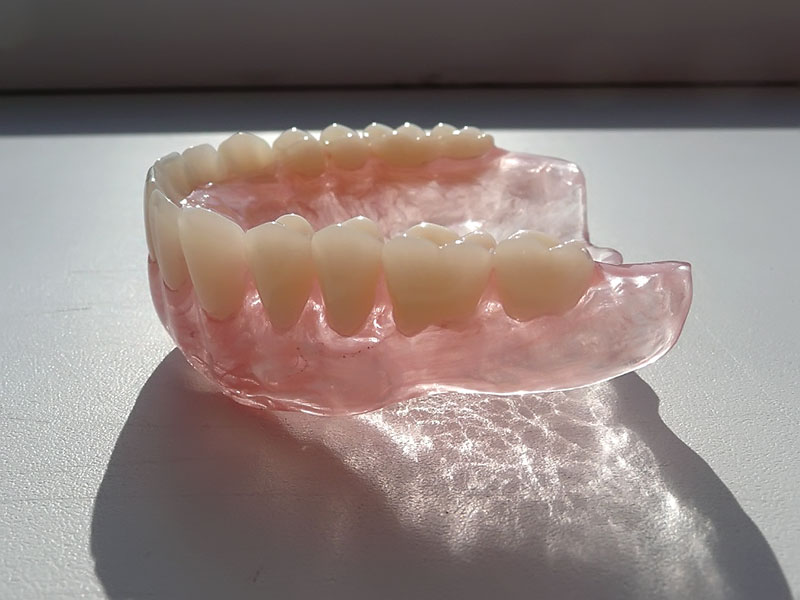Invisible dentures—also known as clear or flexible dentures—offer a discreet, comfortable solution for replacing missing teeth. Unlike traditional dentures that may feel bulky or look obvious, invisible dentures are designed to blend naturally with your gums and remaining teeth for a seamless, confident smile.
In this guide, we’ll explore everything you need to know about invisible dentures: from their benefits and types to the fitting process, care tips, and common concerns.
What Are Invisible Dentures?
Invisible dentures are removable dental appliances made from flexible, clear materials that mimic the natural appearance of gums and teeth. Ideal for those who feel self-conscious about conventional dentures, they offer a modern and subtle alternative.
Benefits of Invisible Dentures
- Natural Appearance: Designed to match your gums and teeth for a barely-there look.
- Enhanced Comfort: The flexible design molds to your mouth for a secure and gentle fit.
- Increased Confidence: Smile, eat, and speak without worrying your dentures will show.
- Less Irritation: Softer materials reduce the risk of sore spots and gum irritation.
- Lightweight Feel: Easier to wear for long periods compared to bulky traditional models.
Types of Invisible Dentures
- Valplast® Flexible Partials
Made from thermoplastic nylon, these popular flexible dentures are durable, biocompatible, and virtually unnoticeable. - Clear Clasp Dentures
Feature transparent clasps instead of visible metal ones, providing a more natural appearance for partial denture wearers. - Flexible Acrylic Dentures
Made with pliable acrylic resin, they offer a balance of comfort, aesthetics, and function.
The Fitting Process: What to Expect
- Initial Consultation
Your dentist will assess your oral health and take impressions of your mouth. - Custom Design
The impressions are sent to a dental lab where your custom dentures are crafted to match your natural tooth color and gum line. - Try-In & Adjustments
Once ready, your dentist will fit the dentures and make minor tweaks for comfort and alignment. - Final Placement & Instructions
After approval, you’ll receive care instructions and tips on daily use.
How to Care for Invisible Dentures
- Daily Cleaning
Gently brush your dentures with a soft denture brush and a mild, non-abrasive cleanser. Avoid regular toothpaste, which can scratch the surface. - Soak Overnight
Place them in a recommended denture-soaking solution to keep them clean and bacteria-free. - Handle with Care
Always clean over a towel or water-filled sink to avoid breakage from drops. - Oral Hygiene Matters
Continue brushing your remaining teeth, tongue, and gums daily. Rinse with an antiseptic mouthwash if advised. - Regular Dental Visits
Get checkups to ensure the dentures still fit well and that your gums and remaining teeth remain healthy.
Tips for Adjusting to Invisible Dentures
Adjusting to invisible dentures can take time, but with the right guidance, you can transition smoothly and confidently.
- Start with Soft Foods
Begin with easy-to-chew options like yogurt, mashed potatoes, scrambled eggs, or soup. As your comfort increases, gradually reintroduce firmer foods. - Chew Evenly on Both Sides
Distribute pressure evenly to avoid denture shifting and help your mouth adapt more quickly. - Practice Speaking Aloud
It may feel awkward at first, but reading out loud and repeating difficult words helps your mouth adjust to the new shape. - Use Denture Adhesive (If Needed)
For added stability and confidence, use a dentist-recommended adhesive—especially in the first few weeks. - Be Patient With the Process
Most people fully adjust to new dentures within a few weeks. Mild soreness or awkwardness is normal at first.
Common Concerns & Solutions
1. Discomfort or Soreness
Minor irritation is common and should fade with time. Persistent pain? Visit your dentist for adjustments.
2. Trouble Eating
Stick to soft foods at first and chew slowly. Avoid sticky or very hard foods until you feel secure with your bite.
3. Speaking Challenges
Lisping or unclear speech is temporary. Practice and patience will help restore natural speech patterns.
4. Loose or Poor Fit
Ill-fitting dentures can cause discomfort and reduce functionality. Your dentist can reline or adjust them for a better fit.
5. Cleaning and Maintenance
Clean your dentures daily with non-abrasive cleanser, soak them overnight, and keep up with oral hygiene to avoid stains, odors, or infections.
When to Contact Your Dentist
Reach out to your dentist if you experience:
- Persistent pain or pressure
- Sores or ulcers caused by dentures
- Difficulty eating or speaking that doesn’t improve
- Dentures that feel very loose or cause slipping
- Any damage or cracks in the denture structure
Timely professional help ensures your dentures remain comfortable and effective.
Advanced Options for Invisible Dentures
1. 3D Printed Dentures
Modern 3D printing allows for extremely precise and customized dentures using digital scans of your mouth.
- ✅ Pros: Precise fit, quicker turnaround, high-quality appearance
- ❌ Cons: Higher cost, requires advanced dental equipment
2. Implant-Supported Invisible Dentures
These dentures attach to dental implants surgically placed in your jaw, providing unmatched stability.
- ✅ Pros: Best fit and comfort, no slipping, preserve bone health
- ❌ Cons: Expensive, surgical process, longer healing time, may not suit everyone
The Future of Invisible Dentures
The dental industry continues to innovate. Future developments may include:
- Smart Dentures: Built-in sensors that track oral health and communicate with dental apps or providers.
- Advanced Biomaterials: New materials that better mimic natural tissue for enhanced realism and comfort.
- Hyper-Personalized Designs: Improved digital scanning and software for even more precise, custom-fit dentures.
Final Thoughts
Invisible dentures offer a discreet, comfortable, and highly functional alternative to traditional dentures. With the right care, professional support, and a bit of patience, they can significantly improve your smile, speech, and self-esteem.
Remember: Proper cleaning, regular dental visits, and paying attention to changes in fit or comfort are key to long-term success.




